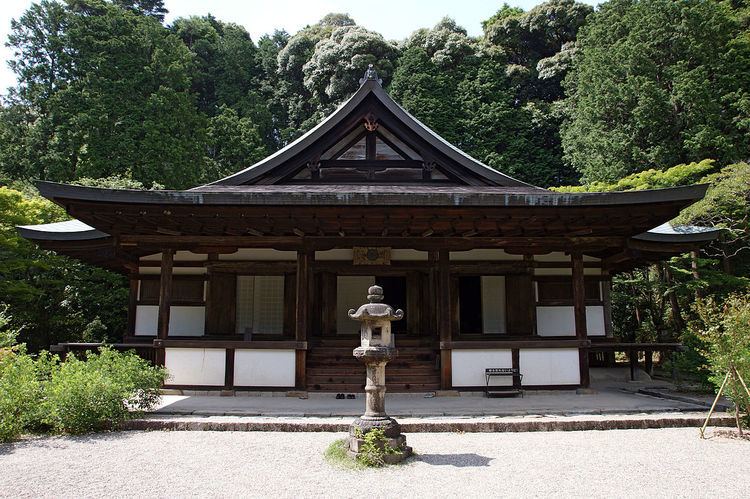Phone +81 742-93-0353 | ||
 | ||
Address Japan, 〒630-1244 Nara Prefecture, Nara, 忍辱山町1273 Similar Shin‑Yakushi‑ji, Ryōsen‑ji, Hannya‑ji Temple, Akishino‑dera, Hokke‑ji | ||
Enjō-ji (円成寺) is a Shingon temple in the northeast of Nara, Japan. A number of its buildings and images have been designated National Treasures and Important Cultural Properties, and its late-Heian period gardens are a Place of Scenic Beauty.
Contents
History
Enjō-ji is said to have been founded in 756 by a Chinese priest who accompanied Ganjin to Japan. The temple was enlarged in the late-Heian and Muromachi periods. Much damage occurred during the Ōnin War and further losses occurred during the Meiji period and after.
Buildings
The two-storey gate of 1468 and Hondō of 1472 are both Important Cultural Properties. The tahōtō is lost and has been replaced with a modern replica.
Also on the grounds are a number of Shinto shrines. The single bay Kasugadō and Hakusandō of 1227/8 are the oldest extant examples of kasuga-zukuri and are thought to have been moved from Kasuga Taisha when it was rebuilt. In 1953 both buildings were designated National Treasures. The Honden of the shrine to Ugajin dating to the end of the Kamakura period is an Important Cultural Property.
Treasures
In the tahōtō is a seated wooden statue of Dainichi Nyorai (木造大日如来坐像) of 1176 by Unkei. Of Japanese cypress using the yoseki-zukuri technique, it is gilded over lacquer and has crystal eyes. In 1920 it was designated a National Treasure. In the Hondō is a seated wooden statue of Amida Nyorai (木造阿弥陀如来坐像) of the Heian period, surrounded by wooden statues of the Shitennō (木造四天王立像) of the Kamakura period, all Important Cultural Properties. Other images include a Jūichimen Kannon of 1026, a child prince of 1309 that has been designated a Prefectural Cultural Property, a Fudō Myōō of the Nambokucho period, and a gilded Yakushi Nyorai. The gorintō of 1321 has also been designated an Important Cultural Property.
Gardens
The temple gardens are a rare example of late-Heian Pure Land paradise gardens and in 1973 were designated a Place of Scenic Beauty.
